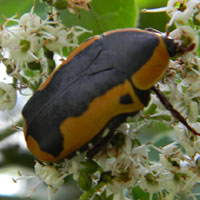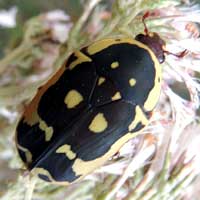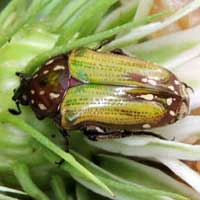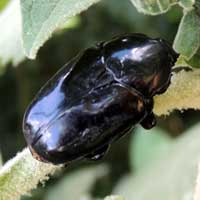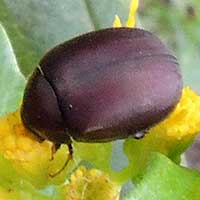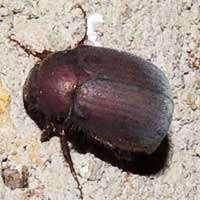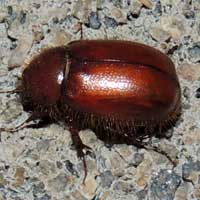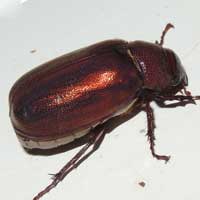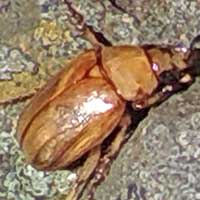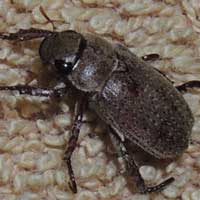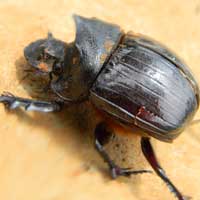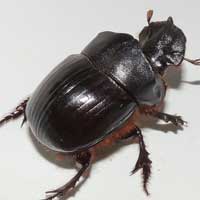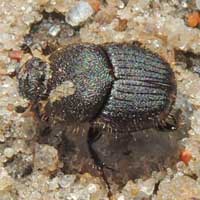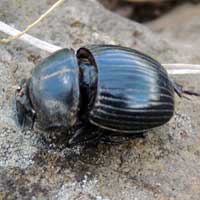Sharply marked large beetles with rather pointed prothorax and head. Conspicuous at flowers. Grubs live in soil.
Clings to and feeds on flowers. Bright yellow-and-black face-like pattern on elytra. Length 23 mm.
The beetle to the left is also a kind of chafer. Many Cetoniinae species in Kenya often found chewing flowers.
Glossy black beetle gnawing of foliage. The elytra have a distinct anterior depression and ridge.
Pollen and nectar are a nutritious food for pollinators and non-pollinators alike.
This may beetle has a unique color. The immature is a soil-inhabiting grub.
Many, many species of may beetles which often come to electric lights. This one has a fringe of long setae all around.
Minute pits arrayed over the surface of the elytra provides the adjective "Punctate". This one was seen at Kakamega Forest.
This relatively soft-shelled beetle was about 10mm long and had come to lights.
This nocturnal scarab beetle appears to have rather enlarged compound eyes.
Large dark brown or black beetles roll grazing animal dung into balls. Males have fabulous horns. This one is a female.
This dung beetle is an amazing earth moving machine.
Along with the many mammals there is a great variety of dung and the insects that recycle dung.
Medium-sized dark brown or black beetles roll animal dung into balls. Notice the shovel-shaped head for digging.
